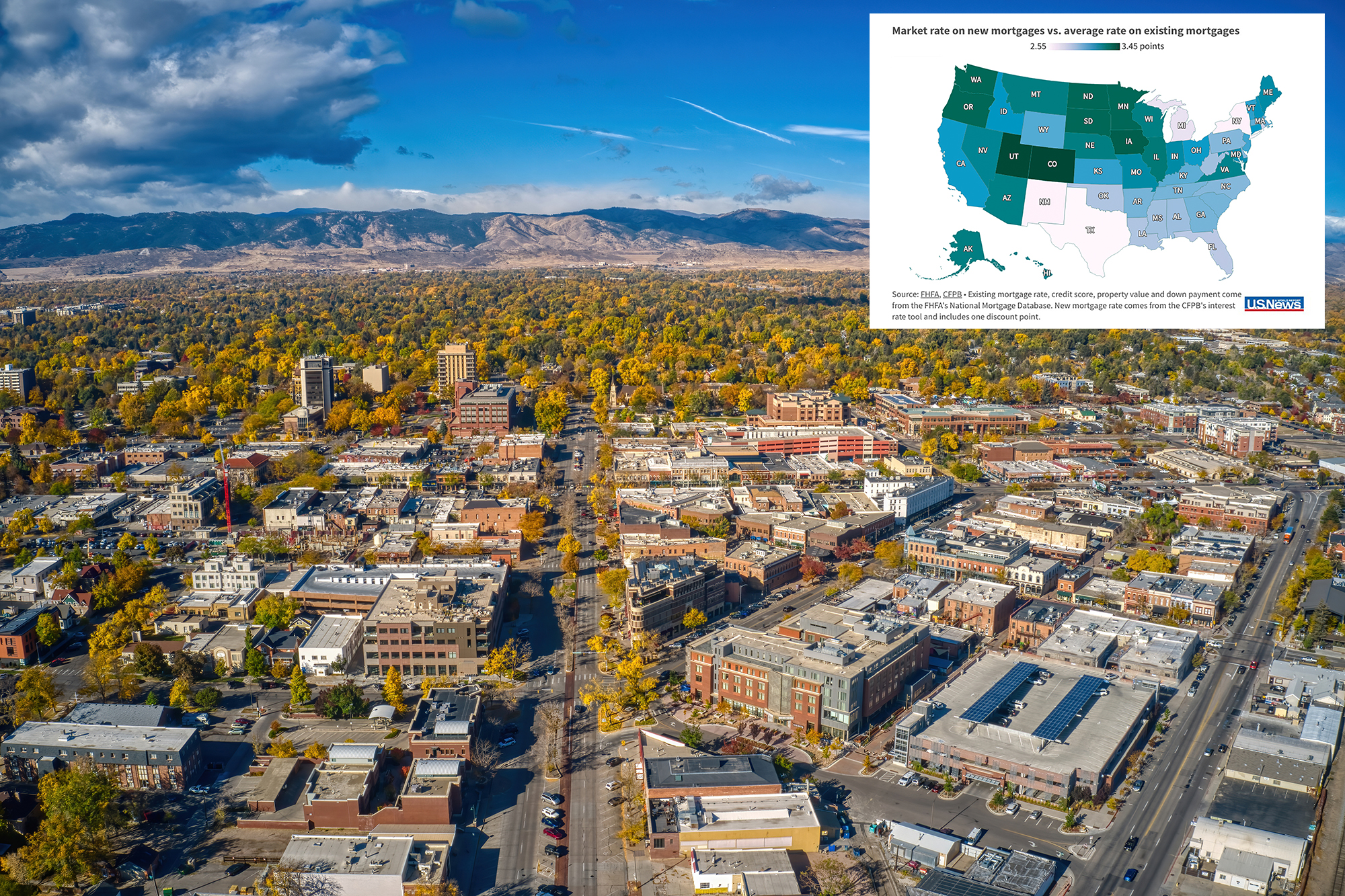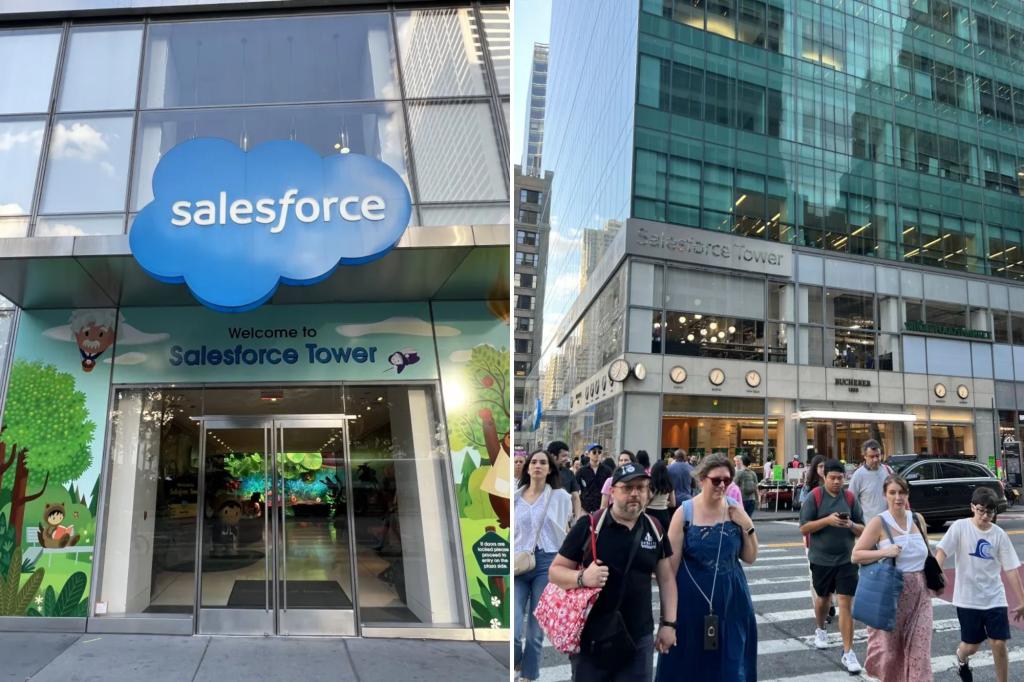
With mortgage rates rising, America’s housing market is stuck in a “mortgage rate lock-in effect,” where homeowners are unwilling to sell because it means they would have to trade their credit. their low interest rate for one with today’s highest rates. .
A new report from US News & World Report has found that this lock-in effect is much worse in some states than others.
It all depends on the state’s “closed gap,” which is the average mortgage interest rate homeowners are currently paying, minus the rate available to them to buy another property. This gap can fluctuate based on location, due to things like local real estate laws or the number of lenders in the area.
Here are the main findings of the report:
- The average mortgage default rate in the US is 4.1%, according to the Federal Housing Finance Agency.
- The average rate for a new mortgage in the US (as of July 2, when the study was conducted) is 7.25%.
- Nationally, the average “lock gap” is 3.15 percentage points between new and existing mortgage rates.
- The national average loan amount is $357,000, so the monthly mortgage payment at 4.1% would be $1,817. With a mortgage at 7.25%, that monthly payment would come to $2,435. That means home buyers buying a new home will end up paying an average of $618 more per month. Plus, homeowners in states with the widest foreclosure gaps will experience an even higher cost increase.
States with the worst mortgage ‘gaps’
Colorado has the largest mortgage rate lock gap in the country. Here’s how US News & World Report breaks down those numbers:
- The existing home owner mortgage rate in Colorado is 3.8% (the lowest of any state).
- A new mortgage in Colorado (as of July 2nd) will get you an average rate of 7.25%. That’s a difference of 3.45 percentage points between new and existing mortgage rates.
- For the average state loan amount of $454,000, a monthly payment at 3.8% would be $2,077. That would jump to $3,097 at 7.25%. That’s a change of $1,020, or 49.1%.
Following Colorado with the largest gaps are Utah (3.445 percentage points), Iowa (3.375), Minnesota (3.35), North Dakota (3.35), Oregon (3.35), South Dakota (3.35) and Washington (3.35).
States with the narrowest lock-in gaps
Homeowners in states with few foreclosure gaps will see fewer cost increases if they sell their homes and then buy at current mortgage rates.
Texas boasts the narrowest mortgage rate lock gap in the nation. Here’s how it plays:
- Homeowners in Texas are holding mortgages at an average rate of 4.3%, one of the highest in the nation.
- Current mortgage rates offered in Texas (as of July 2) average 6.85%, the lowest of any state.
- That’s a difference of 2.55 percentage points between new and existing mortgage rates.
- For the average Texas loan amount of $336,000, a monthly payment at 4.3% would be $1,862. This will grow to $2,202 at 6.85%. That’s a difference of $340 a month.
Following Texas with the narrowest lockout gaps are New York (2,575 percentage points), New Mexico (2,575), Michigan (2,675) and Rhode Island (2,775).
How much more would repeat home buyers pay per month?
In states with high housing costs, homeowners’ mortgage payments can increase by more than $1,000 per month if they sell and then buy at current mortgage rates.
The study found that Hawaii homeowners would see their average monthly payments increase the most, by $1,591.
California homeowners would see their average monthly payments increase by $1,470.
Other states with the highest potential payout increases include the following:
- The District of Columbia would see their payments increase by $1,193.
- Utah would see their payments increase by $1,083.
- Washington would see their payments increase by $1,058.
- Colorado would see their payments increase by $1,020.
Look before you act
“My business is definitely feeling the impact of higher interest rates on our ability to resell projects,” says real estate investor Doug Greene, of Signature Properties in Philadelphia. “Buyers are reluctant to make the leap to a much higher rate and monthly payment.”
While these statistics can be really grim, there is still hope on the horizon for home buyers, especially if they already own a home and have built up some equity.
“Depending on when they bought their home, they may have significant equity,” says Rose Krieger, senior home loan specialist at Churchill Mortgage in Spokane Valley, WA. “That means they can have a bigger down payment to offset the rate and price.”
If that down payment is 20% or more, homeowners would also eliminate the need for mortgage insurance on a conventional loan, further lowering the proposed monthly payment.
But the answer is never one size fits all, says Shmuel Shayowitz, president and chief lending officer of private mortgage banker Approved Funding. So you should always consult a mortgage and financial advisor to crunch the numbers before deciding whether to sell or stay put.
#mortgage #rate #lock #gap #states #worse #housing #market
Image Source : nypost.com


